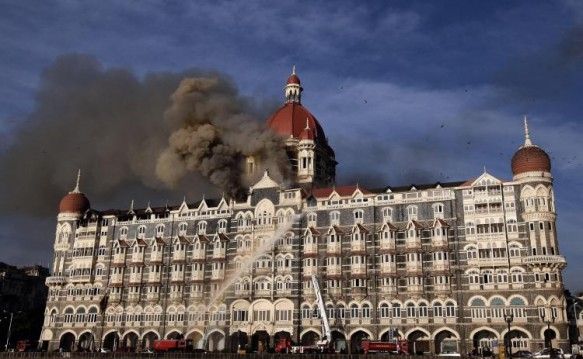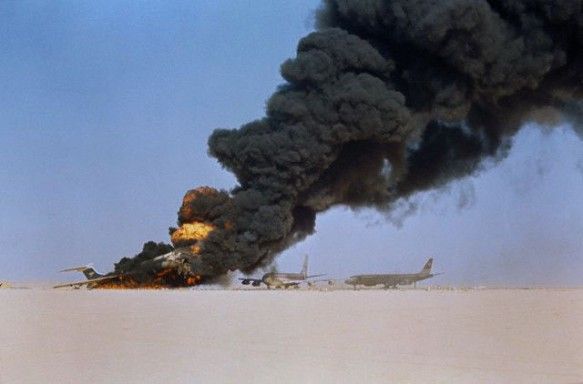
Terrorism leads to high costs in human lives and property. However, it also has significant impacts on the economy of the nation that is at the receiving end of the attacks. Major terrorism attacks can be economically devastating for a country, affect the domestic and even global economy, depending on the nature of the crime and the target nation.
First, there are the direct economic costs of a terrorist act. These include the damages suffered by the victims, the government, the costs of rebuilding, insurance costs, expenses for counter-terrorism measures, victim rehabilitation costs and other expenses that can punch a significant dent in the victimized country’s economy.
Then, there may be indirect costs, such as a fall in the value of the dollar and the price of oil for instance. While the pernicious attacks may be brief, the damage can continue to have repercussions for years. The damage suffered by the twin towers of the World Trade Center in the September 11 attacks against the U.S., for instance, triggered the expensive war on Iraq and had other economic consequences.
The September attacks on the WTC sent ripples across the world, leading other nations to increase their security spending. Australia, for instance, went on to increase its homeland security budget and aid to Iraq and Afghanistan. Since 2001, the country has spent a total of $21.3 billion in defense and aid for the Iraq war.
Other indirect costs of the war may include loss of income from a slowing down of tourism. The terror attacks in Mumbai’s Taj Palace Hotel in 2008, for example, would have impacted tourism to the city and indirectly affected the economy of India. The UK public transport bombings of 7/7 also led to significant losses in tourism revenue.
There are also the costs of running a terrorist attack, though these are usually far less compared to the damage done. Here we take a look at the 10 Most Expensive Terrorist Attacks in History, based on figures for insured property losses, repair costs and other estimated costs.
10. The Taj Palace Hotel Attacks, Mumbai, India, November 26, 2008: over $149 million
It is difficult to estimate the total economic impact the attacks by the Lashkar-e-Taiba terrorist outfit on the Taj Palace Hotel in Mumbai, India. However, the costs of restoring the hotel alone were $40 million
9. Dawson’s Field Hijackings, Jordan, September 12, 1970: $165 million
Three planes were hijacked and blown up by Palestinian militants at a former RAF base in Jordan’s Zarqa desert. The hijacked passengers were released on September 30. The insured property losses incurred because of the event came to $165 million.. Insurance costs for the attacks are also estimated to be around $109 million. Additional costs from business interruptions and impacted tourism is bound to put the figure higher.
8. Docklands Bombing, London, February 9, 1996: $336 million
The IRA claimed credit for a bombing in the Docklands area of London in February 1996, which destroyed a 6-story building and killed two men. The damage to insured property was a whopping $336 million. The damage was caused by a half-ton bomb in a truck and the impact of the bomb was felt half a mile away. The cost of the bombings included a 17-month ceasefire that had been achieved by British, Irish and American leaders to bring peace to the area.
7. Bandaranaike Airport Bombing, Sri Lanka, July 24, 2001: $517 million
The 2001 bombings by the LTTE (Liberation Tigers of Tamil Eelam) at the Colombo International Airport destroyed eight military aircraft and three passenger liners, apart from causing fatalities, damaging three civilian aircrafts and additional Sri Lankan military planes at a base nearby. The damage to insured property in the aftermath of the attacks was estimated to be around $517 million.
6. World Trade Center Bombings, February 26, 1993: $810 million
A truck bomb was exploded in February 1993 at one of the towers of the WTC by Muslim terrorists retaliating against the U.S. support of Israel. The cost to human lives was minimal compared to the 2001 attacks; six civilians were killed and over 1000 injured. Restoration costs came to $810 million, making it one of the most expensive restorations after an act of terrorism.
5. London Bombings, July 7, 2005: over $1.2 billion
The series of suicide attacks on London public transport on the morning of July 7, 2005 has cost the UK government as much as £750 million (or $1.2 billion) in lost tourism revenue. Other costs include the £4.6 million ($7.3 million) in inquests, plus additional rehabilitation and insurance costs.
4. Baltic Exchange Building Bombings, London, April 10, 1992: over $2.2 billion
The Baltic Exchange Building in London is a maritime market trading exchange that was the target of an attack by the IRA with a one-ton bomb in April 1992. The damage to the exchange building was extensive and repairs cost the government as much as £1380 million (over $2.2 billion).
3. Manchester Bombings, June 15, 1996: $966 million
The IRA set off a car bomb in Manchester in June, 1995 and destroyed a shopping mall. 200 people sustained injuries from shrapnel. The total costs of damage to insured property came to $966 million, and the area had to be completely revamped.
2. Bishopsgate Bombing, London, April 24, 1993: over $1.2 billion
The bombings of the London financial district by the IRA in 1993 led to damage that cost £350 million ($562 million) to repair. Additional damage to insured property brought the total losses to over $1.2 billion. The cost of the bombing was a mere $4,800 in contrast.
1. World Trade Center Attacks, September 11, 2001: $3 trillion
Undoubtedly the most expensive terrorist attacks that the world has seen was 9/11. The attacks on the World Trade Center in NYC cost Al Qaeda around $500,000 to get off the ground. According to the New York Times, the total costs to the U.S. government since the attacks have been a whopping $3.3 trillion and rising. Of course a large part of this cost is the government’s response and anti-terrorism measures.
The physical damage and restoration costs came to around $55 billion including losses to insured property. In addition, homeland security and related costs figure at around $589 billion. The cumulative costs of business interruption and reduced airline travel and tourism is estimated to be around $123 billion. Add to that $1.649 trillion in war funding and $867 billion in future war and veteran care, and the entire cost to the U.S. government adds up to a staggering $3.3 trillion.












No comments:
Post a Comment